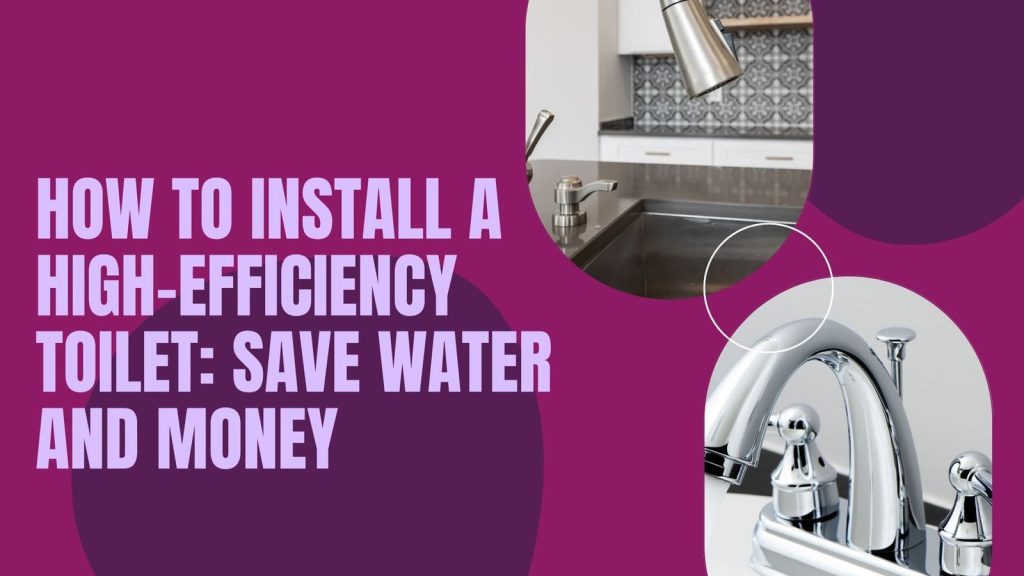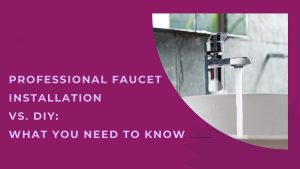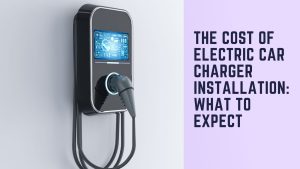The easiest way to decrease your home usage and repair costs is to get a high-efficiency toilet installation done (HET). Apart from the fact that this eco-friendly toilet installation saves water, it also promotes the conservation of the environment by lessening the community’s usage of water, hence lessening the demand for your local water supply. Here you will find an overview of why you should install an HE toilet, what you will need, and much more!
What is a High-Efficiency Toilet, and Why Choose One?
A HET is a toilet model that consumes less water per flush than the conventional and standard models of toilets. This implies that older models, for instance, can utilize up to 3. Conventionally, it takes 5 gallons of water to flush a toilet, but today’s high-efficiency toilets use only 1.28 gallons or less. These toilets have been approved by the EPA’s WaterSense program; these are some of the standards for water-saving toilets.
Why Should One Use a High-Efficiency Toilet?
Water Savings: The main advantage of the use of a high-efficiency toilet is the huge amount of money you are likely to save on water bills. A family of four can save up to 13,000 gallons of water per year if it uses only a high-efficiency model.
Lower Utility Bills: Water-saving toilet installation means that water bills will be reduced, hence making it economical in the long run since more water usage results in high bills.
Environmental Impact: Overall, a cut on the utilization of water is helpful in avoiding the wastage of the most important commodity; in this case, eco-friendly toilet installation would be friendly to the environment for those homeowners who wish to have a changed bathroom look.
Rebates and Incentives: Some municipalities even have incentives for green toilets to encourage the owners to perform green toilet remodeling.
Tools and Materials Needed for High-Efficiency Toilet Installation
Before you begin the water-saving toilet installation, make sure you have the following tools and materials on hand:
Tank and bowl type of a new high-efficiency toilet
Adjustable wrench
An assortment of screwdrivers, both the flathead and Phillips.
Windshield gasket or carper gasket
Toilet flange
Toilet bolts and caps & other
– Level
Plumber’s putty
Tape measure
– Sponge or towels
Bucket (to collect water that is from the old toilet)
– Teflon tape (optional)
Safe hand gloves and goggles
How to Install a High-Efficiency Toilet: Step-by-Step Instructions
Turning off the water supply
Turning off the water supply is another step you should take if the weather is rather cold to prevent water pipes from freezing.
Remove the Old Toilet
The first step is to disconnect the water supply line that supplies water to the toilet. Proprietary: Turn these nuts with a wrench so that it becomes easy to remove the toilet from the ground. Gently remove the old toilet from the bolts on which it rests and place it in another place. It is necessary to take out the old wax ring and then scrub the flange surface.
Replace a Wax Ring
Put a new wax ring or a rubber toilet seal on the flange. Ensure it is well placed; that will help to avoid cases where the fluid leaks on some parts.
Position the New Toilet
Place the toilet bowl upon the bolts on the flange and, being very careful, let it sit down on it. Check there isn’t any sag in the toilet by using spirit level. If required, then place some shims beneath the base where it appears to be uneven and requires to be leveled.
Secure the Toilet
Hold the bolt in position and, using a wrench, switch on the nuts and tighten them. So, do not be too tight when tightening the nut because it will cause the porcelain to crack.
Attach The Toilet Tank
Place it at the bottom of the bowl and screw the bolts, which are supplied by the manufacturer. Leveling it to be straight, use a level. Install the water supply pipe on the fill valve of the tank so as to supply water into the tank.
Reconnect The Water Supply
Shut off the water supply valve and leave the tank to fill with water, then turn the valve on. Check whether the toilet has been installed correctly, and therefore flush it severally to observe its efficiency.
Apply Finishing Touches
Bolt caps should also be installed alongside the toilet seat. Finally, there should be a thin line of plumber’s putty around the base of the toilet, and it should look neat.
Tips for Ensuring a Proper Seal on Your High-Efficiency Toilet
When installing the high-efficiency toilet, it thus requires a proper seal to avoid leakage issues. Here are some tips to ensure everything is watertight:
Choose the Right Wax Ring: If you have your toilet flange mounted below the height of the floor, you should use a thicker wax ring than usual.
Tighten Bolts Evenly: As you fasten the bolts that hold the toilet to the floor, tighten the bolts in a turn. Bring the toilet to a level position where the wax ring will be able to sit properly.
Check for leaks: When you are done with this installation, you should observe whether there is any leakage around the feet of the toilet or close to the water line. Tighten connections as needed.
How to Maximize Water Savings with Your High-Efficiency Toilet
After successfully installing your eco-friendly toilet, there are several ways to further enhance water savings:
Regular Maintenance: For instance, while using a toilet, you need to check frequently for any signs of leakage or any failure in the function. A running toilet is one of the biggest household plumbing problems that results in the wastage of gallons of water daily.
Use Dual-Flush Features: High-efficient toilets have feature of two buttons whereby one is used when the toilet is dealing with liquid wastes and the other when dealing with solid wastes. It is also important to use a suitable flush in order to save the water.
Avoid Clogs: Take care of your toilet by flushing only waste and only tissue paper down the exit waste pipe. Do not flush sanitary wares such as wet wipes or sanitary towels, for they cause blockage, and use a lot of water to perform consecutive flushing.
Upgrade Fixtures: If you haven’t done so, it is about time to employ water-efficient models on other water-using fixtures, including showerheads and faucets, in order to make a complete transformation.






